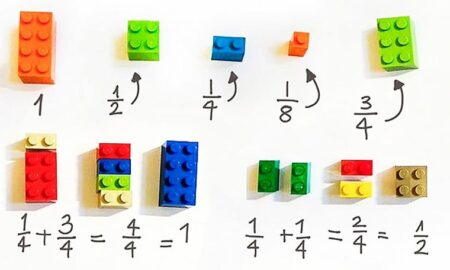Myths
The Five Breads
Story Summary
Two men share their breads with a third man. In return, he gives them 5 coins. But how should they be shared fairly when one gave 2 breads and the other 3? The judge is called. It’s up to you to decide!
Source: Fibonacci (1170–1250), De duobus hominibus habentibus panes.
Older Version
An older version of this story is attributed to Alî ibn Abî Tâlib, a 7th-century figure and expert in logical reasoning. He is also credited with the famous puzzle of the 17 camels.
In this version, one man leaves 8 dirhams to two others in gratitude for a shared meal. However, the 8 bread loaves consumed belonged to unequal portions: 5 for one, 3 for the other.
The first proposes: “Five dirhams for me, three for you.”
The second protests: “Let’s split them equally, four and four!”
They then submit to Alî’s judgment, who replies: “The truth, bitter but fair, is that you are entitled to only one dirham. And he, seven.”
About the Story
This tale presents a mathematical puzzle within an entertaining story. It encourages modeling the situation to understand fair sharing and using critical thinking to grasp the bread distribution.
👉 Discover the Story
Maths
Divisions, fairness…
and an intruder!
👦🏻 Target age: 9–10 years (Grade 4–5)
⏰ Estimated duration:
📎 Materials: cardboard in three different colors, scissors
🎯 Educational Objectives
Develop the following mathematical skills:
• Calculate
• Model
• Reason
Develop the following personal/social skills:
• Seek information
• Critique proposed sharing
• Correct
• Justify
🔢 Mathematical Concepts
• Division
• Fractions
• Equations
• Logic
💬 Pedagogical Commentary
What should the judge do? To decide, they must understand the actual sharing done by the first two men, with the idea that the distribution allowed each person to eat the same amount of bread!
The solution can be modeled as shown below.
Each bread is divided into 3 parts. The guest received 1 part from the first man and 4 parts from the second. So the first gave 1 part, and the second 4 parts.
The fair share is thus 1 coin for the first man and 4 coins for the second, which goes against the first intuitive idea that each gave the same amount of bread and showed equal generosity.
🧩 Note: One solution doesn’t require advanced calculations. Fractions are implicitly present but don’t need prior classroom introduction. The story and activities can serve as an introduction to fractions.
The intuitive solutions by the two men don’t account for the fact that each ate a portion themselves (so they didn’t “invest” it in the sharing).

🟢 Activity 1. Intuition
In groups of 2 or 3 students
🗣️ Instructions for students:
In your opinion, how will the first two men achieve a fair share so that all three can eat the same amount of bread?
Draw the three men, their 5 breads, and the sharing.
💬 Pedagogical Commentary
The solution most often proposed by students, and therefore the most intuitive, is:

– Students naturally assign one bread to each person.
– Two remaining breads are cut in half, giving one half to each person.
– The last half bread is divided into 3 to give one final share to each person.
Observation: This experimental sharing works but doesn’t correspond to a formal mathematical solution as fractions have not yet been introduced.
🟢 Activity 2. 15 Parts for 3 Men
🗣️ Instructions for students:
Now cut each of the 5 breads into 3 and redo the sharing.
💬 Pedagogical Commentary
By multiplication, there are 15 parts in total, so each takes 5 parts.
Naturally, the first two men take their 5 parts from their own breads.
🟢 Activity 3. Manipulate and Cut
🗣️ Instructions for students:
Cut “breads” from cardboard in two different colors (e.g., 3 green and 2 blue) and divide each into three parts.
🟢 Activity 4. Approaching Fractions
By cutting each bread into 3, we have 5 × 3 parts of $\frac{1}{3}$ bread, making 15 parts, which can be written:
$5 = 5 \times \frac{3}{3} = 15 \times \frac{1}{3} = \frac{15}{3}$
Each man has $\frac{5}{3}$ breads.
Also:
$\frac{5}{3} = \frac{3}{3} + \frac{2}{3} = 1 + \frac{2}{3}$
🟢 Activity 5. Identify Equal Fractions

🟢 Activity 5. What About 8 Breads?
Pose the problem of 8 breads in which students will succeed.

